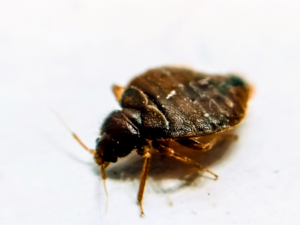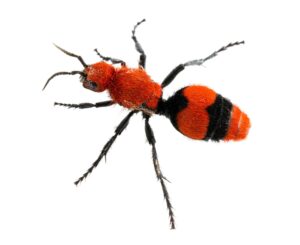Home / Blog / Termites / Your Frequently Asked Questions about Termite Control Answered
Your Frequently Asked Questions about Termite Control Answered

Scientifically reviewed by Rachel Maldonado
-Published on July 25, 2023
-Updated on September 19, 2023
Termites can be devastating to your home, causing thousands of dollars of damage if left unchecked. It’s important to know all the facts about termite control so you can protect your home and prevent an infestation.
As a homeowner, you might have lots of questions. Does natural termite control work? How did termites get into my house in the first place?
Take a deep breath – we’ve got you.
In this post, we’ll answer some of the most frequently asked questions about termite control – including how many types of termites there are, what they eat, and how to keep them away from your home.
How many Types of Termites Are There?
There are over 2,600 species of termites in the world, but only a few of these types are considered pests. The most common types of termites found in the United States are subterranean termites, drywood termites, and dampwood termites.
Subterranean termites are the most destructive of these three types, and they require immediate attention if you suspect an infestation. To identify which species of termite you have, it’s generally best to call in a professional pest control company.
What Do Termites Eat?
Termites eat wood and other materials that contain cellulose, including paper and cardboard. They are attracted to dampened wood and can easily infest your home if there is a moisture problem.
When termites enter your home, they can eat away at the structure of your house, causing major damage that can be costly to repair. It’s important to keep your home dry and free from moisture to prevent an infestation.
Why Are There Termites In My House?
No one wants to imagine uninvited guests living in their home, let alone pests that can cause severe damage. Unfortunately, termites are attracted to homes for a variety of reasons – and it’s not always clear-cut.
Homes with wood or cellulose debris in their yard, especially near the building foundation, are attractive to termites. It’s important to remember, termites are not just attracted to wood. Home insulation, drywall, and even paper products provide the food and shelter termites need to establish a colony.
How Do I Prevent Termites in my Home?
Prevention is key when it comes to termite control!
One way to prevent termites is by repairing leaky pipes and reducing moisture issues, ventilating closed spaces, replacing damaged wood, and keeping mulch and debris away from the building foundation. Regular inspections by a professional pest control service can also help identify potential termite infestation areas.
How Much Damage Can Termites Cause?
Termites are known for their destructive habits and can cause an incredible amount of damage if left unchecked. They are not picky eaters, and can cause significant structural damage to homes.
In the United States, termites cause over five billion dollars in damages every year.
Many homeowners insurance policies do not cover homeowner termite treatment, leaving the homeowner to foot the bill. Early detection and treatment are the keys to preventing structural damage.
How Can I Check for Termites on My Property ?
The signs of termite infestations can be subtle, so it’s important to know what to look for. Mud tubes are a tell-tale sign of an infestation. They are made of soil and wood and are used by termites as a transportation system to protect themselves from the air.
You may also see discarded wings littered around the home. Swarming termites lose their wings after they mate, and they usually fall off in piles. Extreme termite damage is also noticeable, such as hollowed-out wood or buckling floors.

How Can I Tell the Difference Between Winged Ants and Termites?
If you suspect that you have a termite infestation in your home, the first step is identifying the type of pest, but it’s not always easy.
Winged ants and termites have similar winged appearances, but some differences distinguish them. Termites have straight antennae, and their hindwings and forewings are equal in length, while flying ants have bent antennas, and their forewings are much longer than their hindwings.
Also, termites appear to have broad waists with no noticeable narrowing, while gflyin winged ants have waists that narrow down to a thin, delicate constriction.
Do DIY Termite Treatments Work?
The simple answer is no. DIY termite treatments may seem cheaper, but they can end up being more expensive in the long run. While DIY termite treatments may kill some termites, they do not eliminate the entire colony, which may result in a re-infestation.
Professional pest control services have access to more effective treatment methods and years of experience in dealing with termites, ensuring that they eliminate the whole colony.
What Types of Termite Treatments Are There?
When it comes to termite treatments, it’s essential to understand that there is no one-size-fits-all approach. Different termite species require different strategies to eliminate them entirely.
Some common treatments for termites include liquid barrier treatments by using a liquid termiticide, baiting systems, foam or heat treatments, and fumigation.
No matter what kind of termite problem you’re dealing with, hiring professional pest control services from the Hawx Pest Control team ensures that your termite problem is handled effectively, and the entire colony is eliminated. We may also be able to suggest a natural termite treatment to get rid of the problem, too.
Termites can be a nightmare for homeowners, but with preventative measures such as regular inspections, professional pest control services, and an understanding of how to prevent infestations, we can keep these pests at bay.
We hope these answers to frequently asked questions on termite control have been helpful and informative. Remember that it’s always essential to be proactive in termite control and prevention – so don’t hesitate to reach out to us if you have any other questions!
Related Articles
Visit our blog to learn more.
→






